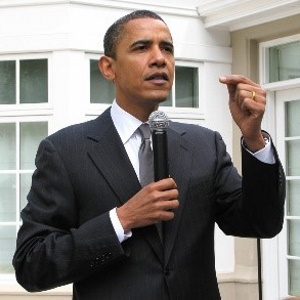Session 2: Communication in Supervision
In this session you will be learning about the importance of communication skills as a supervisor. We will review modes of communication and practice some active listening skills.
Getting Ready For This Session
- Remember to have your workbook and a pen or pencil handy.
- You will need about 80-90 minutes to complete the session.
Learning Objectives
By the end of this session you will be able to:
- Explain the importance of effective communication skills in supervision
- Describe models and methods of communication
- Demonstrate communication skills that facilitate the ability to effectively work with others
Learning Activities
-
Introduction (2 min)

Communication is the most important skill you need to have as a supervisor. As you gain experience and awareness, you will continue to build communication skills as a foundation for mentoring, coaching, and supportive supervision. This session is an introduction to key communication concepts; it will help you understand what effective communication is and why it is important in your role as a supervisor.
In supportive supervision, effective communication encompasses deeper understanding and some specialised skills not required for everyday casual communication. In this session we will explore supervisory skills and learn about common barriers to communication.
-
Pre-Session Assessment (5 min)
Let’s start off with a quick check of your knowledge and comfort about communication. Each question will have a score for you to track in your workbook. Please track your scores as you go through this assessment and make note of any content areas that you answered incorrectly. This exercise will help to identify gaps in knowledge and areas that need more attention as you go through the content in this session.
-
Impact of Communication on Supervision (5 min)
Effective communication is the art of conveying a message in such a way that the message is received in the way that the sender intended. Let’s start by hearing Abisha Jonga share his thoughts on effective communication from over a decade in the field as a supervisor.
Transcript

It has been proved that through effective communication a supervisor can build trust with team members. This is done through approaching them in a respectful and considerate manner, sharing a clear message, and staying engaged in the interaction. Once you have been able to establish trust, you have opportunities to reduce misunderstandings and improve productivity. I find it important to pay attention to emotions, both mine and the receiver’s, as that can have an impact on how they hear what you are saying. So, self-awareness and awareness of others is necessary as a supervisor. When you communicate effectively you can provide constructive feedback about performance and workplace behaviour in a way that will help the team improve and not cause them to shut down or be defensive.
The impact of communication in your role as a supervisor is multifaceted. Benefits of effective communication include (click on the words below for brief descriptions):
- Motivation
- Sharing information and teaching new skills
- Diffusing difficult situations that affect the workplace
- Modelling
- Liaising
Motivation
Through effective communication teams get a sense of belonging and can build trust and improve morale.
Sharing information and teaching new skills
It is empowering to have the knowledge and skills to do a great job.
Diffusing difficult situations
Creating an environment where teams are mutually respected and feel comfortable communicating helps to avoid misunderstandings.
Modelling
Serve as a model for how to communicate with clients and peers on the job.
Liaising
Liaise among levels within the system, such as clinical staff and management or lay staff and management.
The way you communicate with someone should help them trust and respect you, as well as to trust the information you give them.
-
Types of Communication (10 min)
Verbal communication is communication that uses words. It is best suited for giving information.
Verbal communication includes:
- Spoken words
- Written words (notes, forms, etc.)
- Language choice
- The levels of language and terms used—simple or complex, technical or commonplace
Effective verbal communication is:
- Short
- Organised
- Free of technical or difficult words
- In a language the listener feels comfortable using
Non-verbal communication is communication we do without using words. It has been said that more communication is non-verbal than verbal, as non-verbal cues can convey more meaning, greatly influencing how information is interpreted. Non-verbal communication conveys messages about attitudes and feelings. Because it can both support and communicate your message more clearly, show intention, display feelings, or even de-escalate tension, non-verbal communication can help you communicate more effectively.
Non-verbal communication includes:
- Eye contact (e.g., looking away, looking down)
- Facial expression (smile, frown, raised eyebrows)
- Body language and posture (crossing arms or legs, fidgeting, slouching)
- Tone of voice (pitch, volume, pace, timbre, emotion)
- Gestures (waving, pointing, indicating size or shape)
Effective non-verbal communication involves:
- Making culturally appropriate eye contact
- Keeping an open posture—do not sit with arms crossed, or facing away from the other person
- Leaning forward to demonstrate interest
- Nodding while listening
Check your awareness of non-verbal communication. For each of these images below, how would you interpret what is being communicated through body language?

by Unknown Author is licensed under CC BY-SA This young man shows interest in the conversation, he is smiling with arms open for engagement, and he is leaning in.
by Unknown Author is licensed under CC BY-SA Often someone with crossed arms can be conveying defensiveness. It can also be a sign that someone is nervous or angry. The tension that we see in her mouth and jaw can also indicate frustration or a negative emotion.
by Unknown Author is licensed under CC BY-SA This woman looks as though she is actively listening and taking notes, her posture is upright and her facial expression shows concentration.
by Unknown Author is licensed under CC BY-SA Former US President Obama looks as if he is explaining something using his hands to emphasize a point.
by Unknown Author is licensed under CC BY-SA Without more context, this can be hard to understand, it can show excitement, fear, awe, or other emotions.It can be easy to misinterpret non-verbal communication, especially if you do not know someone or their culture well. It is important to pay attention to both the words being used and the speaker’s non-verbal signals to help you interpret correctly what they are saying. As with verbal communication, it helps to ask questions for clarification if you are not sure what is being communicated.
Observation (looking around) is another tool that helps you gather information. Although it is not exactly a communication skill, it is still an important skill that uses your eyes, ears, and brain to help you process (notice and remember) information.
-
Elements of Effective Communication (5 min)
Effective communication has six main elements: the sender, the receiver, the channel, the context, the message itself, and feedback (see figure)1.

Source (Sender)
The person who is communicating information.
Destination (Receiver)
The person receiving the message and trying to understand it. The relationship between sender and receiver (e.g., supervisor and supervisee) plays a role in how the receiver hears and reacts to the message.
Message
The information being shared or relayed.
Channel
How the sender is sending the message. Communication channels can be formal, informal, or unofficial; communication methods include verbal, non-verbal, written, and digital communication.
Feedback
Shows whether the message was received, and how it was received. Some kind of acknowledgement of a message helps the sender to ensure that the message was received as intended.
Context
The environment in which the communication is taking place. This can be the actual physical environment (e.g., the room you are in), or it could be the emotional state (e.g., happy, sad, anxious, angry, surprised) of the sender or receiver.
-
Communication Skills (5 min)
-
Active Listening (5 min)
Let’s begin this section by watching a couple of recordings from Everyday Leadership:
True Listening (Bertha Katjivena)
Transcript
One thing is that I’ve learned to listen. You cannot be in a leadership position without listening. And by listening it’s really to apply all the senses because some people are talking, you pretend to listen, but you do not listen or hear the small prints of what they are saying or even writing. Because out of those you will pick up those issues that other people might not pick up. You’ll pick up that this person is just here, but deep down is either suffering or is having a problem that he or she is not comfortable in sharing. So, that’s why I say listening and really having to apply another sense to what you are listening or to what people are telling you.
Bertha KatjivenaActive Listening (Victor Lakay)
Transcript
Active listening to me is not necessarily an obligation for me to come up with an answer. It’s just really giving the person the time, is knowing what is being said and why it is being said and sometimes active listening is not—I know that someone doesn’t necessarily need a response. For someone to know that I really listen, I engaged with them is good enough.
Victor LakayActive listening involves more than just hearing someone—it includes listening with all your senses in full concentration to understand the person talking.
Characteristics of active listening include:
- Being neutral and non-judgemental
- Being patient (don’t try to fill every moment of silence if it’s not necessary)
- Giving both verbal and non-verbal feedback (smiling, eye contact, nodding, leaning in, mirroring) to show that you are listening
- Asking clarifying and follow-up questions (use open-ended questions)
- Reflecting upon what was said
- Summarising what you heard
This means more than “yes” or “no” for an answer. For example:
Closed: Do you feel well?
Open: How do you feel today? -
Active Listening Activity (10 min)
For each of the communications below (audio recordings and text message), write down the following in your workbook:
- What was being communicated to you?
- What was the tone?
- How did it make you feel as the receiver?
-
Barriers to Effective Communication (10 min)
It's not always easy and often takes a lot of determination. But making an effort to remove the obstacles—tangible and intangible—that stand in our way can be the key to building relationships that really work. Eric Garner
There are a number of considerations to keep in mind that may present barriers to communication. It is important to be mindful of these, and to address them when they are present in your exchanges. A barrier is not necessarily a fault; rather, it is an element of communication that you need to be aware of so that your message is transmitted clearly.
Here are the seven most common barriers to communication:
Tap each bar to read more about the barriers below.-
1. Physical barriers (also referred to as environmental barriers)
Physical barriers are often fairly easy to spot in the workplace. They include:
- Marked-out territories
- Areas into which strangers are not allowed
- Closed doors
- Barrier screens
- Separate areas for people of different status
- Large working areas or units that are physically separate from others
Additional physical or environmental barriers that you may not see as quickly include:
- Noise (including other people’s conversations or activities going on outside)
- Technical problems
- Distractions (looking at a phone or computer)
- Distance between communicators
- Uncomfortable weather conditions (high or low temperatures)
-
2. Perceptual barriers
Perceptual barriers are experiences that distort communication.
Some perceptual barriers involve physiological or biological barriers that are related to a person’s health, fitness, or abilities. These may include deafness or impaired hearing, impaired vision, etc.
Another aspect of perception is that we all see the world and experience events differently. Our thoughts, assumptions, and personal experience all shape our perceptions of reality.
For example, if the receiver of a communication is untrusting because of their past experiences, then they may form an opinion of what is being communicated without effectively listening.
-
3. Emotional barriers
One of the chief barriers to open and clear communication is the emotional barrier. People experience a range of emotions throughout the day, so at any point in time, an emotional state may distract someone from effectively expressing or receiving information. For example, if someone has just experienced a loss, they may be more sensitive to critical feedback than they would normally be. Pay attention to the possibility that your message may be impacted by the emotional state of the receiver or sender. Any emotion—including joy, fear, excitement, anger, or shame—could skew the communication.
-
4. Cultural barriers
Cultural barriers may affect our communication patterns.
Communicating across cultures can be both rewarding and challenging. Cultures affect how we think—the ways we see, hear, and interpret the world. Thus the same words can mean different things to people from different cultures, even when they communicate using the same language. In addition to ethnicity and regional origin, cultural factors that affect how people communicate include age, education, workplace, interests, or even food, art, and music.
Also, each culture has its own norms about what constitutes proper behaviour; these affect both verbal and non-verbal communication. Whether or not one looks the other person in the eye, whether one speaks directly or indirectly on a topic, how close people stand to each other when they are talking, whether emotions are shared—all of these and more are norms of communication that differ from culture to culture.
-
5. Language barriers
Language barriers can be as obvious as speaking another language or dialect, but there are also more subtle language issues that you need to be aware of. Some examples are the use of technical speech, jargon, acronyms, and idioms. If you do not speak the same language as the person you are communicating with, try to bring in a trained interpreter to reduce misunderstandings.
-
6. Gender barriers
Gender barriers in communication are often rooted in expectations and generalisations made about women and men. Sometimes these stem from cultural norms; sometimes they come from larger societal norms that people have grown up with. For example, within the Shona culture in Zimbabwe, during family gatherings such as lobola ceremonies, women are hardly called upon except when they are expected to announce the mother’s charge for her daughter who is getting married. (The rest of the charges are determined by the men, even if the mother is not in agreement.) Wherever they started, we should be aware of assumptions about gender roles in cross-gender communication. Studies have shown that men and women tend to process information and communicate differently. However, it is important to remember that not all men and women fit neatly into defined categories.
-
7. Interpersonal barriers
Interpersonal barriers to communication can result in workplace conflict that is difficult to resolve. Interpersonal barriers might take the form of positive or negative attitudes, inattentive listening, emotional reactions, and other dynamics. These result in withdrawal (refusing to engage), passive resistance (doing the work according to procedure but not contributing more than the minimum required, or being present at a meeting but not actively participating), and even manipulation (sabotaging the work of a co-worker).
Effective interpersonal communication requires a high level of honesty and acceptance of both oneself and others. Acknowledging differences as well as similarities is important in fostering understanding.
As mentioned above, the issues that are listed here are not the only barriers faced in communication, but the most common.
-
1. Physical barriers (also referred to as environmental barriers)
-
Overcoming Barriers to Communication (10 min)
Think about some of the cultural norms that you incorporate in your work. Consider that you work in many different settings and may need to adjust how you interact based on the setting.
We have just learned about some of the most common barriers that we experience in the workplace. In the exercise below, match the strategy that can be used to address some of the obstacles faced.
-
Clearly Communicating With Your Team (5 min)
-
Takudzwa’s Clinic Visits (10 min)
Recall that we are following Takudzwa, a new district mentor, as he begins working with teams at Mwenzi Polyclinic and Mutorashonga Clinic. (You can go back to Session 1 to refresh your memory if needed.)

Takudzwa Takudzwa wants to establish a foundation for good communication with the teams. He has thought through his plans for all the discussions he wants to have on these initial visits; now it is time to put those plans into action.
Takudzwa schedules his visit to Mwenzi Polyclinic. He shows up on time and follows all the established protocols at the clinic before meeting with the team. He is excited to get to know the team; as soon as he walks into the clinic, he walks over to the Programme Nurse to introduce himself. She is with a client and asks him to step out and wait until she is done. He apologises and lets her know that it is time to meet as they had scheduled.

Takudzwa waits until the Programme Nurse finishes with the client and then checks back to see when a good time would be to meet. He speaks to her in a respectful and calm manner: ‘I notice there are quite a number of clients to be seen and you are under a great deal of pressure. I would like you to be able to join the meeting; how can I help?’ They agree that he will assist by seeing a few of the clients himself.
Once all the clients have been attended to, the team gathers in the break room to meet. Takudzwa is introduced by his supervisor, the provincial mentor, Kuda. Takudzwa begins the meeting by sharing a little about himself and then begins to tell the team what his expectations are. He explains that he has high hopes for this team and will be tracking their progress regularly. He goes on to tell them that he will be using the rest of this visit to review the registers and complete a site assessment. The team looks at him with blank faces and they are exchanging glances with one another.
Kuda pulls Takudzwa off to the side and quietly gives some feedback on the interaction.
Takudzwa thanks Kuda for the feedback, and checks that he understands by paraphrasing:
Thank you for this feedback, I will take more time to get to know the team and try to pay attention to the non-verbal cues being given.
He goes back to the team, this time opening the conversation by asking the team members to share a little about themselves, and giving them time to share their views on the strengths and challenges they experience at the clinic. Takudzwa then continues with the visit, asking questions and allowing the team members to explain their systems. He finishes the visit, completes his documentation for the clinic and lets the team know that he will return next week to do a deeper dive into the work.The next day Takudzwa visits Mutorashonga Clinic. He does not call ahead, thinking it is such a small facility that it wouldn’t be an issue. When he gets there, he sees what looks like an argument between the nurse and a client. The nurse is waving her arms around and sounds as though she is yelling. The client then sits down calmly in the waiting area.
It turns out that the clinic is very busy; Takudzwa realises that he will not be able to meet with the team. He has learned a couple of valuable lessons: plan ahead for meetings and do not jump to conclusions when observing interactions.
-
Action Plan (5 min)
Review the communication skills presented earlier in this session.
Using the Action Plan form in your workbook, list two or three communication skills that you would like to improve as a supervisor. Write a few sentences about how you are currently practicing those skills, and how you would like to develop them further.
-
Post-Session Assessment (5 min)
Now that you have completed this session, let’s take time to check your knowledge and comfort about supervision. Please track your scores as you go through this assessment, compare them with your pre-test scores, and make note of any content areas where you answered incorrectly.
If you find that you have some gaps in your knowledge or understanding, think about what you can do to fill in those gaps for yourself, and what resources you can access.
-
Tips for Effective Communication (3 min)
We discussed a number of skills and barriers to effective communication. Let’s finish up this session with some tips from the field. Here is Abisha Jonga sharing some communication wisdom.
Transcript

It is amazing that something we do every day that seems so simple is really so complex. Communication can be really challenging, it is so easy for breakdowns to occur during transmission, whether it is the speaker, the receiver, or even the message itself. Here are my top 10 tips for effective communication in supervision, I’ll start from tip number ten:
- Make suggestions instead of giving commands, like
have you considered this?
orwould it be possible to do it that way?
- Do not give too much information at once
- Use the right channels for the message, should it be verbal, email, text?
- Watch body language, both yours and the receiver’s
- Ask questions to confirm you understand what you heard
- Find a way to show confidence in the speaker, validate them, even if you don’t agree with what they say, respect that they have shared with you
- Be aware of the environment and things that can get in the way of your message getting through
- Remember that communication is a two-way interaction
- Communicate clearly, choose your words carefully, don’t use jargon or slang
- Actively listen, and by actively, I mean not just keeping quiet while someone is talking, but really paying attention
- Make suggestions instead of giving commands, like
-
Resources
Below are links to resources relevant to this session.
Title/Source File Communication Skills Checklist Click to open file.
Footnotes
- Source: Peter G. Furst, The Furst Group/University of California Berkeley; The Role of Communication in Effective Supervision | Expert Commentary | IRMI.com
